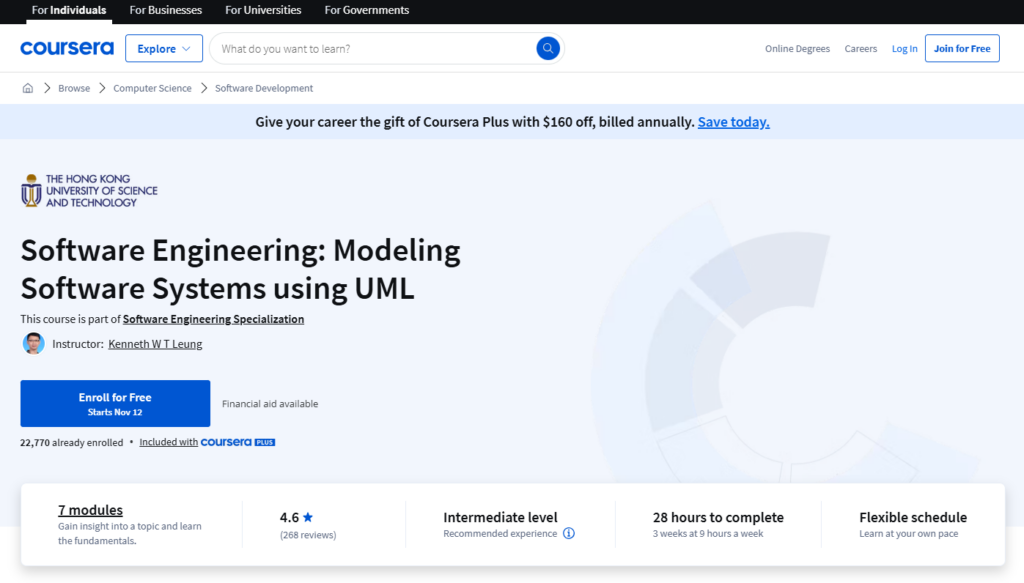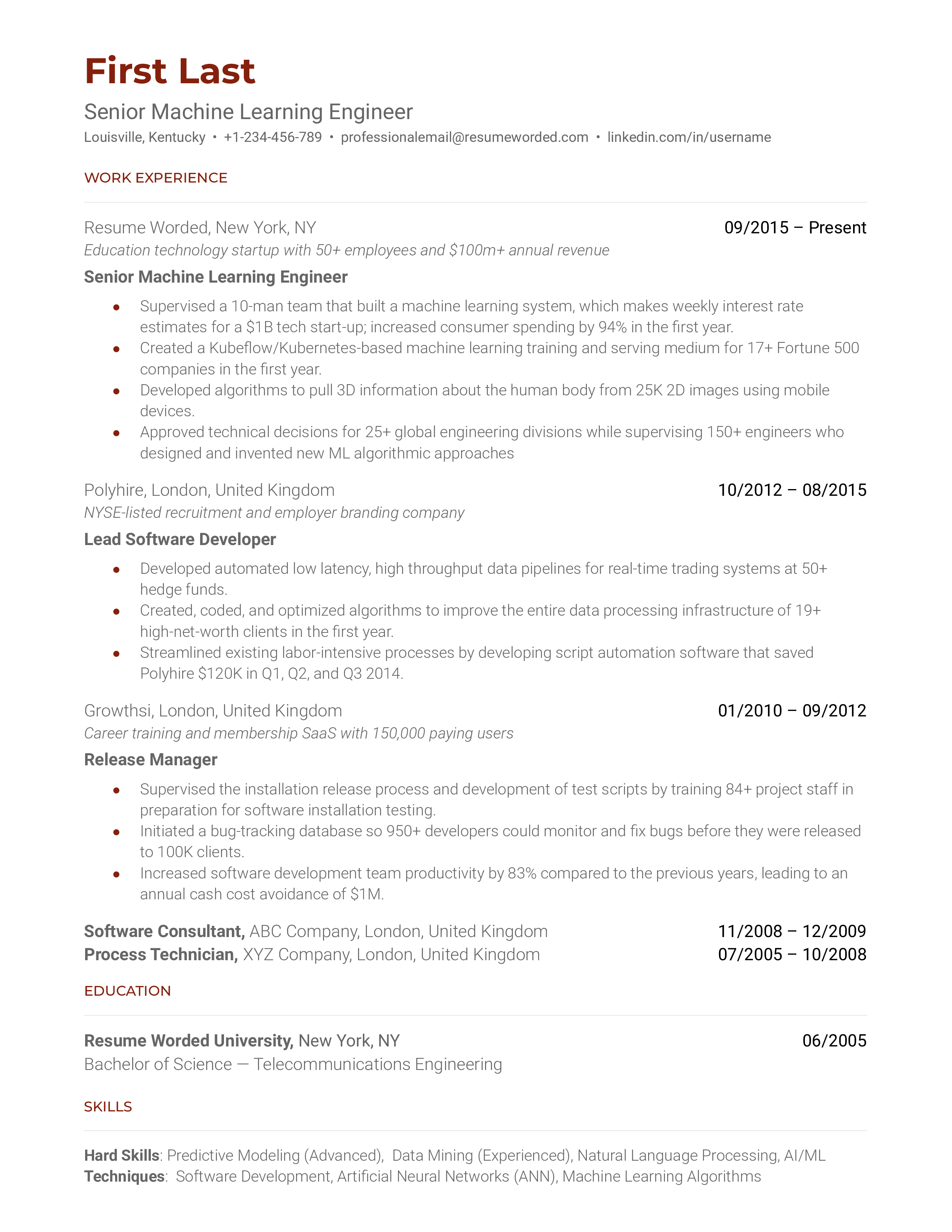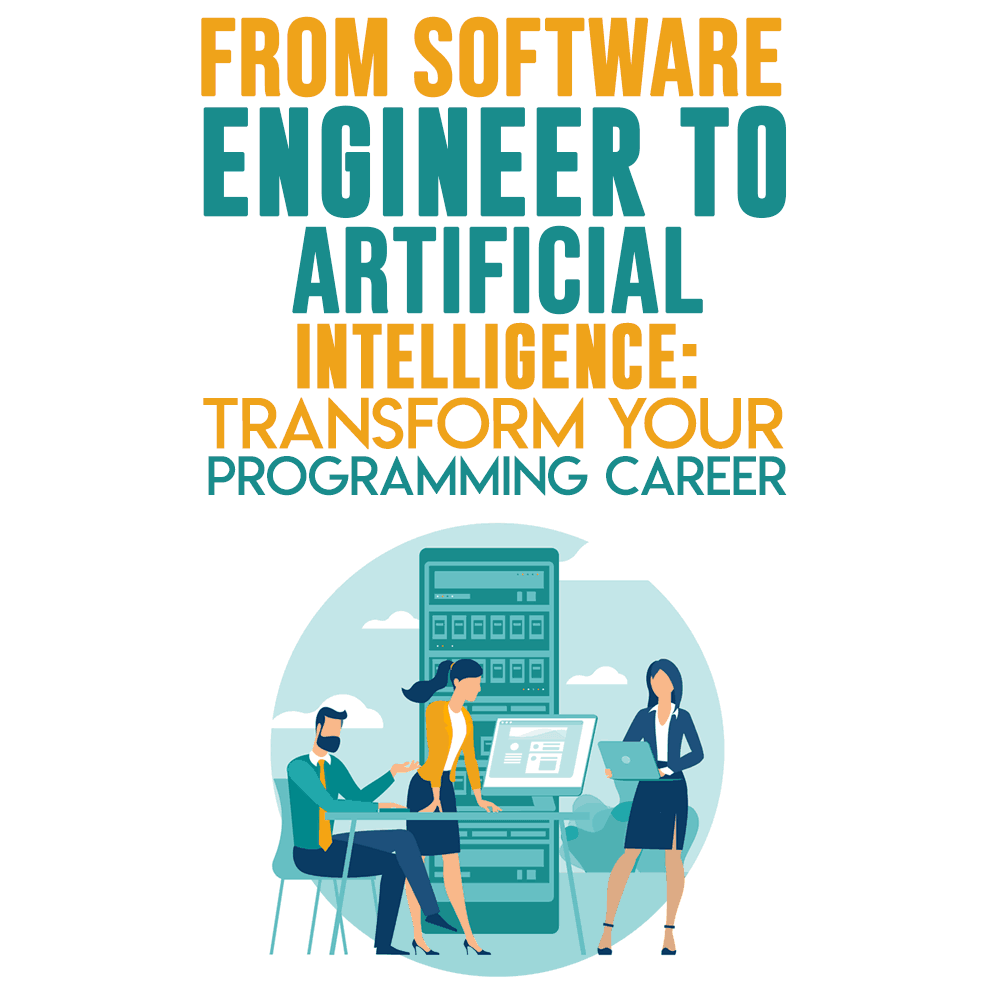All Categories
Featured
Table of Contents
- – Get This Report about How To Become A Machine ...
- – See This Report on Machine Learning Engineer F...
- – Rumored Buzz on 5 Best + Free Machine Learnin...
- – Machine Learning Engineer Learning Path Can B...
- – All about How To Become A Machine Learning E...
- – Not known Facts About Fundamentals To Become...
- – Examine This Report on Certificate In Machin...
Some individuals think that that's unfaithful. Well, that's my whole occupation. If someone else did it, I'm mosting likely to utilize what that individual did. The lesson is putting that apart. I'm requiring myself to believe via the possible options. It's more concerning taking in the material and trying to apply those concepts and much less about finding a library that does the job or searching for someone else that coded it.
Dig a little bit deeper in the mathematics at the beginning, just so I can construct that structure. Santiago: Finally, lesson number seven. I do not believe that you have to recognize the nuts and bolts of every algorithm before you utilize it.
I've been making use of semantic networks for the longest time. I do have a sense of just how the gradient descent functions. I can not explain it to you right now. I would have to go and examine back to really get a better intuition. That doesn't imply that I can not resolve points making use of neural networks, right? (29:05) Santiago: Attempting to force people to think "Well, you're not mosting likely to succeed unless you can discuss every information of exactly how this functions." It returns to our arranging instance I think that's simply bullshit recommendations.
As a designer, I've serviced lots of, many systems and I have actually utilized lots of, lots of points that I do not comprehend the nuts and screws of how it functions, despite the fact that I comprehend the impact that they have. That's the final lesson on that particular thread. Alexey: The funny point is when I believe about all these libraries like Scikit-Learn the algorithms they make use of inside to execute, for example, logistic regression or another thing, are not the very same as the algorithms we research in artificial intelligence classes.
Get This Report about How To Become A Machine Learning Engineer [2022]
So even if we attempted to find out to obtain all these basics of artificial intelligence, at the end, the formulas that these libraries utilize are different. ? (30:22) Santiago: Yeah, definitely. I think we need a lot much more materialism in the industry. Make a great deal more of an influence. Or focusing on providing value and a little bit less of purism.

I typically speak to those that desire to function in the market that desire to have their influence there. I do not dare to speak regarding that due to the fact that I don't recognize.
Right there outside, in the sector, materialism goes a lengthy way for certain. (32:13) Alexey: We had a comment that stated "Really feels more like motivational speech than discussing transitioning." So perhaps we ought to switch over. (32:40) Santiago: There you go, yeah. (32:48) Alexey: It is a good motivational speech.
See This Report on Machine Learning Engineer Full Course - Restackio
One of the important things I intended to ask you. I am taking a note to discuss becoming better at coding. But initially, let's cover a pair of points. (32:50) Alexey: Let's begin with core devices and frameworks that you require to discover to in fact shift. Let's say I am a software application designer.
I understand Java. I know SQL. I know how to make use of Git. I know Celebration. Maybe I understand Docker. All these things. And I become aware of artificial intelligence, it feels like a great point. What are the core tools and structures? Yes, I watched this video clip and I get convinced that I don't require to obtain deep right into mathematics.
Santiago: Yeah, definitely. I believe, number one, you must start learning a little bit of Python. Because you already understand Java, I do not assume it's going to be a massive transition for you.
Not due to the fact that Python is the exact same as Java, however in a week, you're gon na obtain a lot of the distinctions there. You're gon na be able to make some progress. That's top. (33:47) Santiago: After that you obtain specific core tools that are mosting likely to be used throughout your entire profession.
Rumored Buzz on 5 Best + Free Machine Learning Engineering Courses [Mit
That's a collection on Pandas for information adjustment. And Matplotlib and Seaborn and Plotly. Those three, or one of those 3, for charting and displaying graphics. After that you get SciKit Learn for the collection of maker learning algorithms. Those are tools that you're mosting likely to need to be making use of. I do not advise simply going and learning more about them out of the blue.
Take one of those programs that are going to begin presenting you to some troubles and to some core ideas of maker understanding. I don't remember the name, however if you go to Kaggle, they have tutorials there for complimentary.
What's excellent concerning it is that the only requirement for you is to know Python. They're mosting likely to present a problem and inform you how to make use of decision trees to solve that details issue. I think that procedure is incredibly powerful, due to the fact that you go from no device finding out background, to understanding what the issue is and why you can not resolve it with what you know now, which is straight software program engineering techniques.
Machine Learning Engineer Learning Path Can Be Fun For Everyone
On the other hand, ML designers concentrate on structure and deploying artificial intelligence models. They concentrate on training versions with information to make predictions or automate tasks. While there is overlap, AI designers handle more diverse AI applications, while ML designers have a narrower emphasis on artificial intelligence formulas and their functional implementation.

Artificial intelligence designers concentrate on developing and releasing machine learning versions right into production systems. They deal with design, making sure models are scalable, effective, and integrated right into applications. On the various other hand, information researchers have a more comprehensive duty that consists of information collection, cleansing, exploration, and structure versions. They are often in charge of drawing out insights and making data-driven choices.
As organizations significantly embrace AI and maker discovering modern technologies, the need for skilled experts expands. Machine discovering engineers work on cutting-edge projects, contribute to innovation, and have competitive wages.
ML is fundamentally different from typical software application development as it concentrates on teaching computer systems to gain from information, instead than programming explicit rules that are implemented methodically. Unpredictability of end results: You are most likely made use of to composing code with foreseeable outcomes, whether your function runs when or a thousand times. In ML, however, the end results are less certain.

Pre-training and fine-tuning: Just how these models are trained on substantial datasets and after that fine-tuned for details tasks. Applications of LLMs: Such as message generation, belief evaluation and information search and retrieval.
All about How To Become A Machine Learning Engineer Without ...
The ability to handle codebases, merge modifications, and resolve conflicts is just as crucial in ML development as it remains in conventional software application tasks. The skills created in debugging and testing software applications are very transferable. While the context might change from debugging application logic to determining problems in data processing or model training the underlying concepts of organized investigation, theory testing, and repetitive refinement coincide.
Equipment understanding, at its core, is greatly reliant on data and chance concept. These are vital for understanding how algorithms gain from information, make predictions, and evaluate their efficiency. You need to think about ending up being comfy with ideas like statistical relevance, distributions, theory testing, and Bayesian reasoning in order to layout and interpret models properly.
For those curious about LLMs, a complete understanding of deep learning designs is helpful. This includes not only the technicians of neural networks but likewise the design of details designs for various use situations, like CNNs (Convolutional Neural Networks) for picture processing and RNNs (Persistent Neural Networks) and transformers for consecutive information and all-natural language handling.
You must know these problems and learn methods for identifying, alleviating, and connecting regarding bias in ML versions. This consists of the possible effect of automated choices and the honest ramifications. Lots of versions, particularly LLMs, need significant computational sources that are frequently supplied by cloud systems like AWS, Google Cloud, and Azure.
Building these abilities will not only facilitate a successful shift right into ML however additionally guarantee that developers can add efficiently and sensibly to the development of this vibrant area. Concept is important, but nothing defeats hands-on experience. Begin servicing jobs that enable you to apply what you have actually learned in a useful context.
Develop your jobs: Beginning with basic applications, such as a chatbot or a message summarization device, and gradually boost intricacy. The field of ML and LLMs is swiftly evolving, with brand-new developments and technologies emerging routinely.
Not known Facts About Fundamentals To Become A Machine Learning Engineer
Contribute to open-source projects or write blog site posts regarding your understanding trip and jobs. As you obtain expertise, start looking for chances to integrate ML and LLMs into your work, or seek new duties focused on these modern technologies.

Potential use instances in interactive software application, such as recommendation systems and automated decision-making. Comprehending unpredictability, basic statistical actions, and probability distributions. Vectors, matrices, and their function in ML algorithms. Error reduction strategies and gradient descent discussed simply. Terms like version, dataset, features, labels, training, reasoning, and recognition. Data collection, preprocessing strategies, version training, evaluation processes, and release considerations.
Decision Trees and Random Woodlands: User-friendly and interpretable models. Matching issue types with proper models. Feedforward Networks, Convolutional Neural Networks (CNNs), Reoccurring Neural Networks (RNNs).
Data flow, transformation, and feature engineering approaches. Scalability principles and efficiency optimization. API-driven strategies and microservices integration. Latency management, scalability, and version control. Constant Integration/Continuous Deployment (CI/CD) for ML workflows. Design tracking, versioning, and performance monitoring. Finding and dealing with modifications in design performance gradually. Addressing efficiency bottlenecks and source monitoring.
Examine This Report on Certificate In Machine Learning

You'll be presented to 3 of the most pertinent components of the AI/ML technique; managed learning, neural networks, and deep learning. You'll realize the differences in between typical shows and device learning by hands-on development in monitored understanding before building out intricate distributed applications with neural networks.
This course acts as a guide to machine lear ... Show A lot more.
Table of Contents
- – Get This Report about How To Become A Machine ...
- – See This Report on Machine Learning Engineer F...
- – Rumored Buzz on 5 Best + Free Machine Learnin...
- – Machine Learning Engineer Learning Path Can B...
- – All about How To Become A Machine Learning E...
- – Not known Facts About Fundamentals To Become...
- – Examine This Report on Certificate In Machin...
Latest Posts
A Comprehensive Guide To Preparing For A Software Engineering Interview
The Easy Way To Prepare For Software Engineering Interviews – A Beginner’s Guide
The Top 10 Websites To Practice Software Engineer Interview Questions
More
Latest Posts
A Comprehensive Guide To Preparing For A Software Engineering Interview
The Easy Way To Prepare For Software Engineering Interviews – A Beginner’s Guide
The Top 10 Websites To Practice Software Engineer Interview Questions